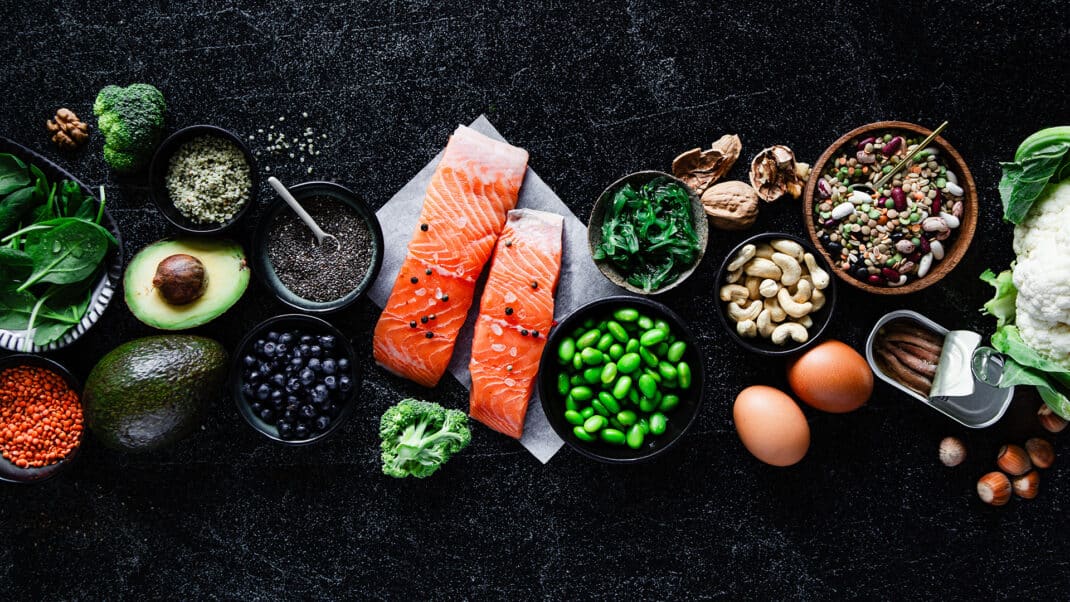
Question: What are the most nutritious eggs? There are so many kinds in the supermarket—brown, white, omega-3, free-range. Are there any differences?
Answer: Egg nutrients include protein, fat, vitamin A and choline. Eggs do have cholesterol, but cholesterol in food has little impact on cholesterol in your blood.
Do different eggs have different nutrition profiles? First of all, there is no nutritional difference between white and brown eggs. Different breeds of chickens simply lay eggs of different colors, from white to brown to green.
A hen’s diet can affect her eggs. Usually, eggs contain small amounts of omega-3 fatty acids, the healthy fats also found in fish, walnuts and flax seeds. Feeding chickens foods with omega-3s does increase the levels of these fatty acids in eggs (Miranda et al. 2015; Neijat et al. 2016). Should you buy omega-3 eggs? If you eat fish weekly, snack on walnuts or regularly sprinkle flax, chia or hemp seeds on food, then you probably don’t need more omega-3s in your eggs.
The eggs of “free-range” and “pastured” hens have different nutritional profiles than those of hens raised only indoors, but the nutritive value is hard to predict without knowing what the hens eat. It can depend on how much and what kinds of plants and insects they have access to. Chickens with access to pasture may have more fat, omega-3 fatty acids, vitamin E and beta-carotene in their eggs (Anderson 2011; Karsten et al. 2010). You may have noticed beta-carotene coloring the deep-orange yolks of backyard (pastured) eggs. They make beautiful omelets, but carrots and leafy greens also provide beta-carotene.
“Cage-free” eggs are laid by hens not confined to cages. These hens don’t
necessarily get outside to forage, so their eggs are unlikely to be nutritionally different from those of caged chickens. Organic eggs are produced by hens that eat organic feed and may spend some time outdoors, but they aren’t necessarily more nutritious than others.
All eggs are nutritious, so my advice is to shop for varieties that you can afford
and will feel good about eating.
References
Anderson, K.E. 2011. Comparison of fatty acid, cholesterol, and vitamin A and E composition in eggs from hens housed in conventional cage and range production facilities. Poultry Science, 90 (7), 1600–08.
Karsten, H.D., et al. 2010. Vitamins A, E and fatty acid composition of the eggs of caged hens and pastured hens. Renewable Agriculture and Food Systems, 25 (1), 45–54.
Miranda, J.M., et al. 2015. Egg and egg-derived foods: Effects on human health and use as functional foods. Nutrients, 7 (1), 706–29.
Neijat, M., et al. 2016. Increasing levels of dietary hempseed products leads to differential responses in the fatty acid profiles of egg yolk, liver and plasma of laying hens. Lipids, 51 (5), 615–33.
Sanna Delmonico, MS, RDS, CHES
"Sanna Delmonico, MS, RDN, CHE, is an associate professor at the Culinary Institute of America where she teaches food safety and nutrition. She previously led programming for the CIA Healthy Kids Collaborative and the CIA-Harvard Healthy Kitchens, Healthy Lives Continuing Medical Education Conference. Prior to joining the CIA, she was an instructor at Santa Rosa Junior College where she co-coordinated the dietetic technician program. Sanna develops delicious, seasonal recipes and writes about food and nutrition for publications, including IDEA Fitness Journal. She lives in Napa, California, and is a home winemaker."





